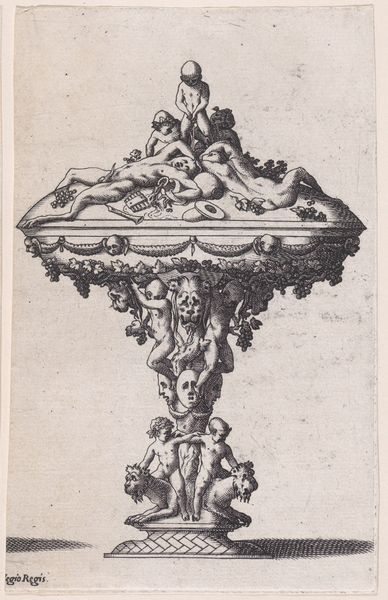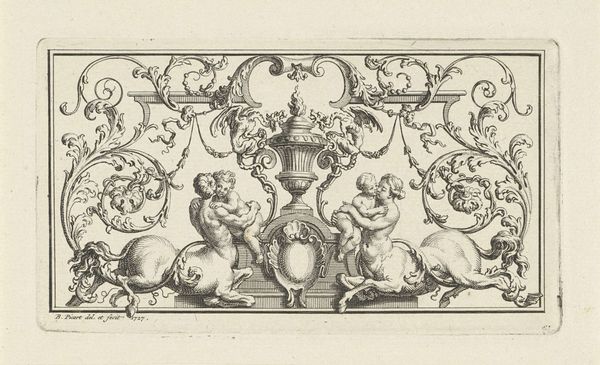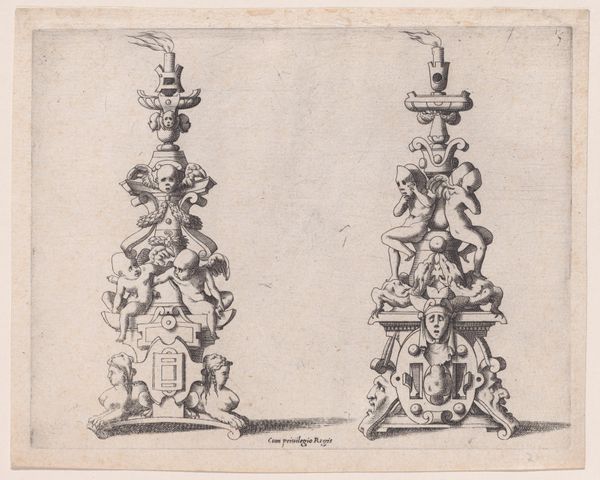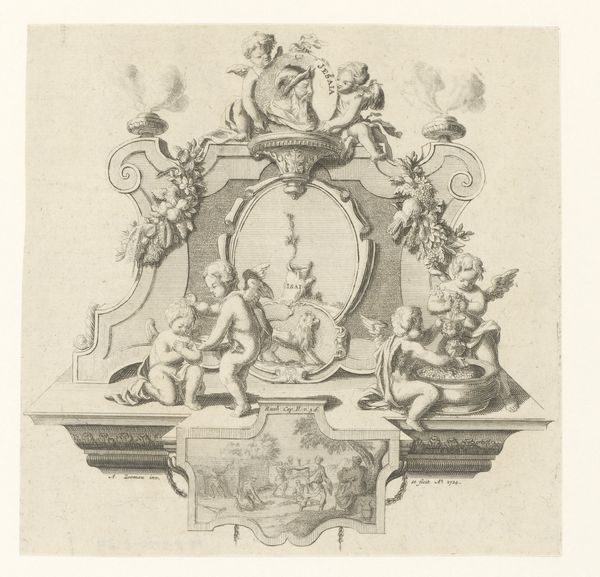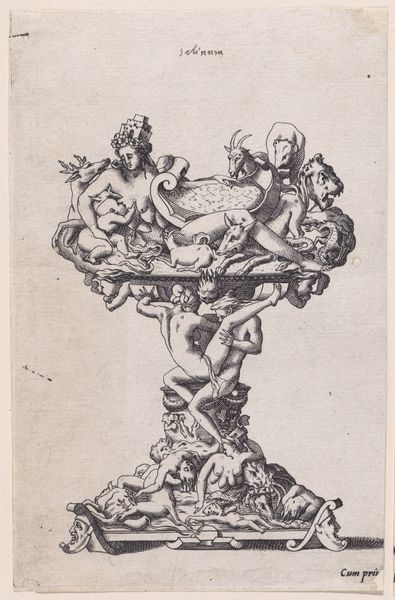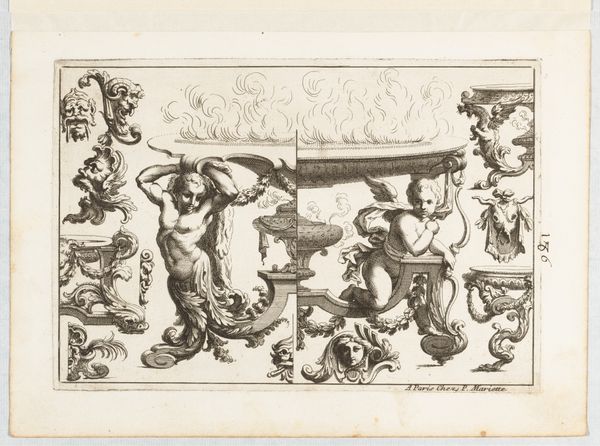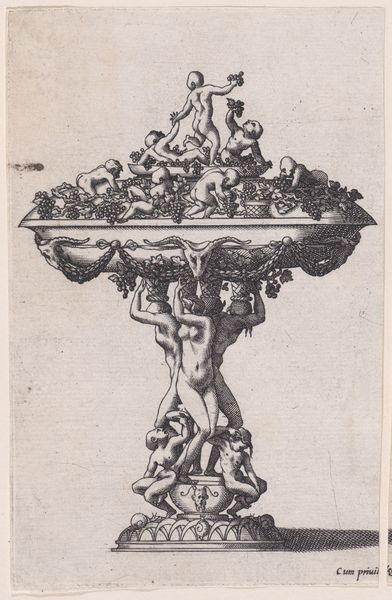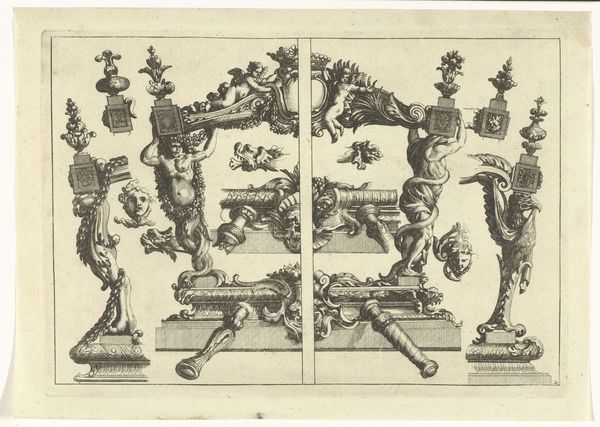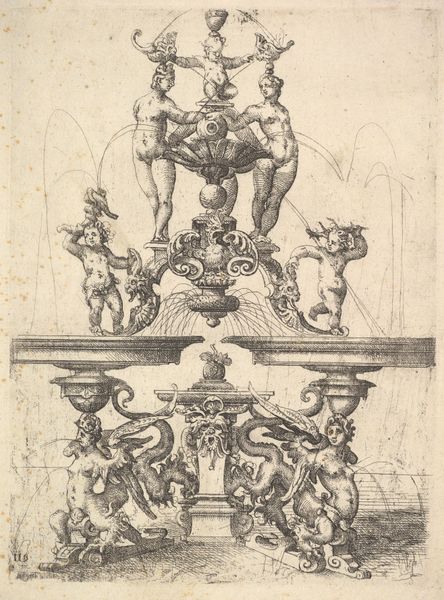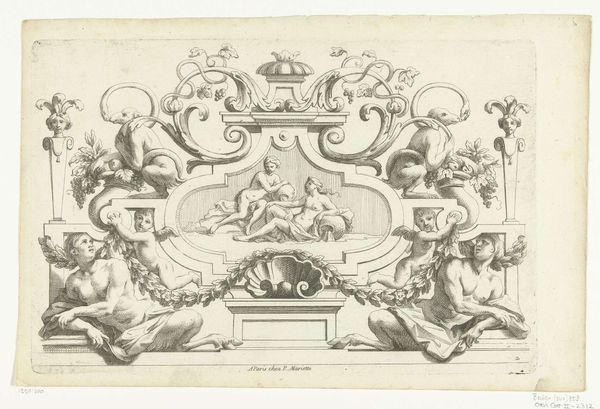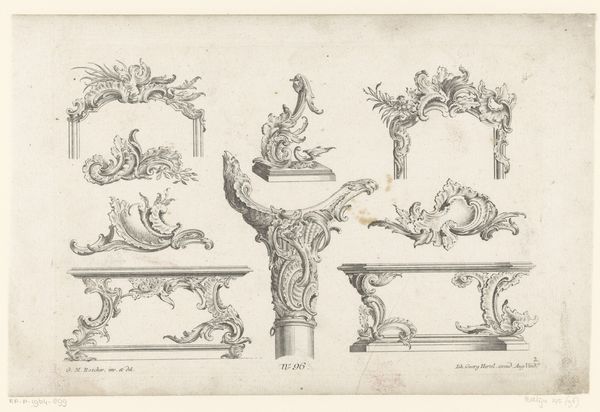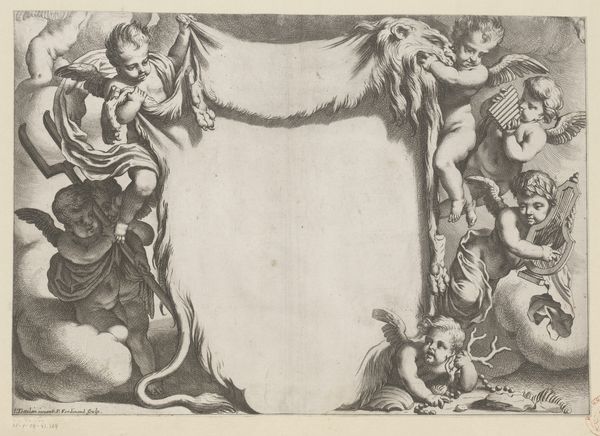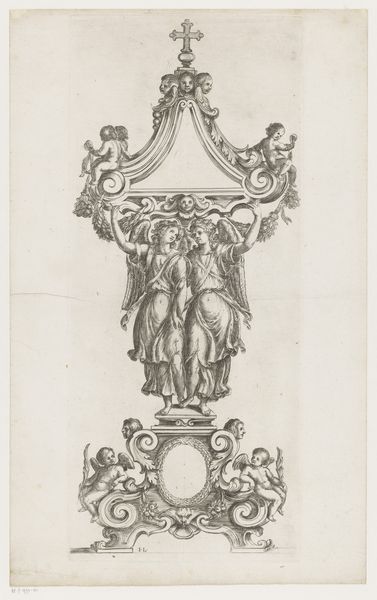
Dimensions: height 139 mm, width 179 mm
Copyright: Rijks Museum: Open Domain
René Boyvin created these two salt cellars sometime in the 16th century. Notice the prominent figures adorning each piece: reclining gods and goddesses amidst beasts both real and imagined. These are not mere decorations; they are potent symbols invoking the classical world. The imagery is distinctly Bacchanalian, recalling ancient Roman feasts and theatricality. The drunken god lounging with wild animals speaks of a loss of control. We see echoes of these themes in Renaissance paintings of similar feasts, where figures are intertwined with excess. But let's delve deeper. This specific symbol, the Bacchus figure, appears throughout the centuries, each time slightly altered. The underlying themes of ecstasy and chaos persist. Consider the emotional impact: the image aims to stir up the subconscious, evoking feelings of primal abandon. Such imagery reminds us that these symbols never truly disappear; they merely transform. It is a cyclical resurgence, embodying a powerful current that flows through history, constantly re-emerging in our collective memory.
Comments
No comments
Be the first to comment and join the conversation on the ultimate creative platform.
